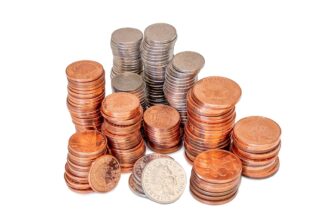- How to Store Your Private Key Safely: Beginner’s Security Guide
- Why Private Key Security Matters (More Than You Think)
- Beginner-Friendly Private Key Storage Methods
- Critical Mistakes Beginners Must Avoid
- Step-by-Step Secure Storage Protocol
- Advanced Security Upgrades for Long-Term Storage
- FAQs: Private Key Storage for Beginners
- Q: Can I store my private key in a password manager?
- Q: What if my paper wallet gets damaged?
- Q: Are biometrics (fingerprint/face ID) safe for key storage?
- Q: How often should I check my backups?
- Q: Can I memorize my private key?
- Final Security Checklist
How to Store Your Private Key Safely: Beginner’s Security Guide
Your private key is the most critical piece of your cryptocurrency security. Lose it, and you lose access to your funds forever. Share it, and anyone can steal your assets. For beginners, understanding how to store private keys safely isn’t just important—it’s non-negotiable. This comprehensive guide breaks down practical, beginner-friendly methods to secure your cryptographic keys like a pro.
Why Private Key Security Matters (More Than You Think)
A private key is a unique cryptographic code that proves ownership of your crypto assets. Unlike traditional bank accounts, there’s no password reset option. If your private key is compromised or lost, recovery is typically impossible. Hackers constantly target exposed keys through malware, phishing, and cloud breaches. Proper storage isn’t optional—it’s your first line of defense against irreversible loss.
Beginner-Friendly Private Key Storage Methods
Choose one of these secure approaches based on your technical comfort:
- Hardware Wallets (Most Secure): Dedicated offline devices like Ledger or Trezor. Private keys never touch internet-connected devices.
- Paper Wallets (Offline Option): Physically printed keys stored in a safe or vault. Use a malware-free computer when generating.
- Encrypted USB Drives: Password-protected flash drives with AES-256 encryption. Store in a fireproof safe.
- Metal Backup Plates: Fire/water-resistant steel plates (e.g., Cryptosteel) for long-term key preservation.
Critical Mistakes Beginners Must Avoid
Steer clear of these catastrophic errors:
- ❌ Storing keys on cloud services (Google Drive, iCloud, email)
- ❌ Screenshotting keys or saving in phone galleries
- ❌ Typing keys into unverified websites or apps
- ❌ Sharing keys via messaging apps or social media
- ❌ Keeping only one copy (no backup)
Step-by-Step Secure Storage Protocol
- Generate offline using trusted open-source software (e.g., Electrum) on a clean device
- Create 2-3 physical backups on paper/metal, stored in separate locations
- Encrypt digital copies with VeraCrypt if using USB drives
- Test recovery with a small transaction before transferring large amounts
- Never disclose your key to anyone—legitimate services won’t ask for it
Advanced Security Upgrades for Long-Term Storage
Once comfortable, enhance protection with:
- Multi-Signature Wallets: Require 2-3 keys to authorize transactions
- Passphrase Protection: Add a 25th word to hardware wallets for brute-force resistance
- Geographically Distributed Backups: Store copies in different cities/countries
FAQs: Private Key Storage for Beginners
Q: Can I store my private key in a password manager?
A: Only if encrypted and offline. Cloud-based managers risk exposure. Use offline managers like KeePassXC with local storage.
Q: What if my paper wallet gets damaged?
A: Always create multiple backups on archival-quality paper or metal. Store in waterproof containers.
Q: Are biometrics (fingerprint/face ID) safe for key storage?
A: Biometrics unlock devices but don’t encrypt keys. Combine with hardware wallets—never as standalone protection.
Q: How often should I check my backups?
A: Verify integrity every 6 months. Replace paper copies if faded; test metal plates for corrosion.
Q: Can I memorize my private key?
A: Not recommended. Keys are 64-character strings—human memory is unreliable for cryptographic security.
Final Security Checklist
- ✓ No digital copies stored online or on networked devices
- ✓ Minimum 2 physical backups in secure locations
- ✓ All backups encrypted/password-protected
- ✓ Recovery process tested successfully
- ✓ Zero shares with third parties
Remember: Your private key equals absolute ownership. Treat it with the same caution as physical gold bars—because in crypto, it’s far more valuable. Start with simple methods like hardware wallets or encrypted USBs, and upgrade security as your portfolio grows. Stay safe out there!








